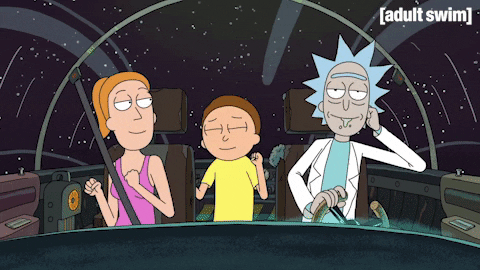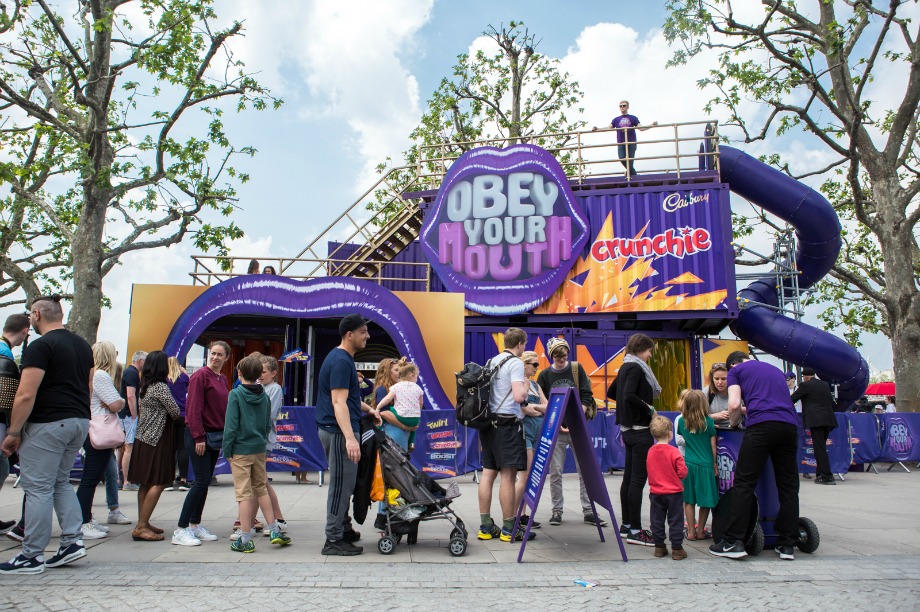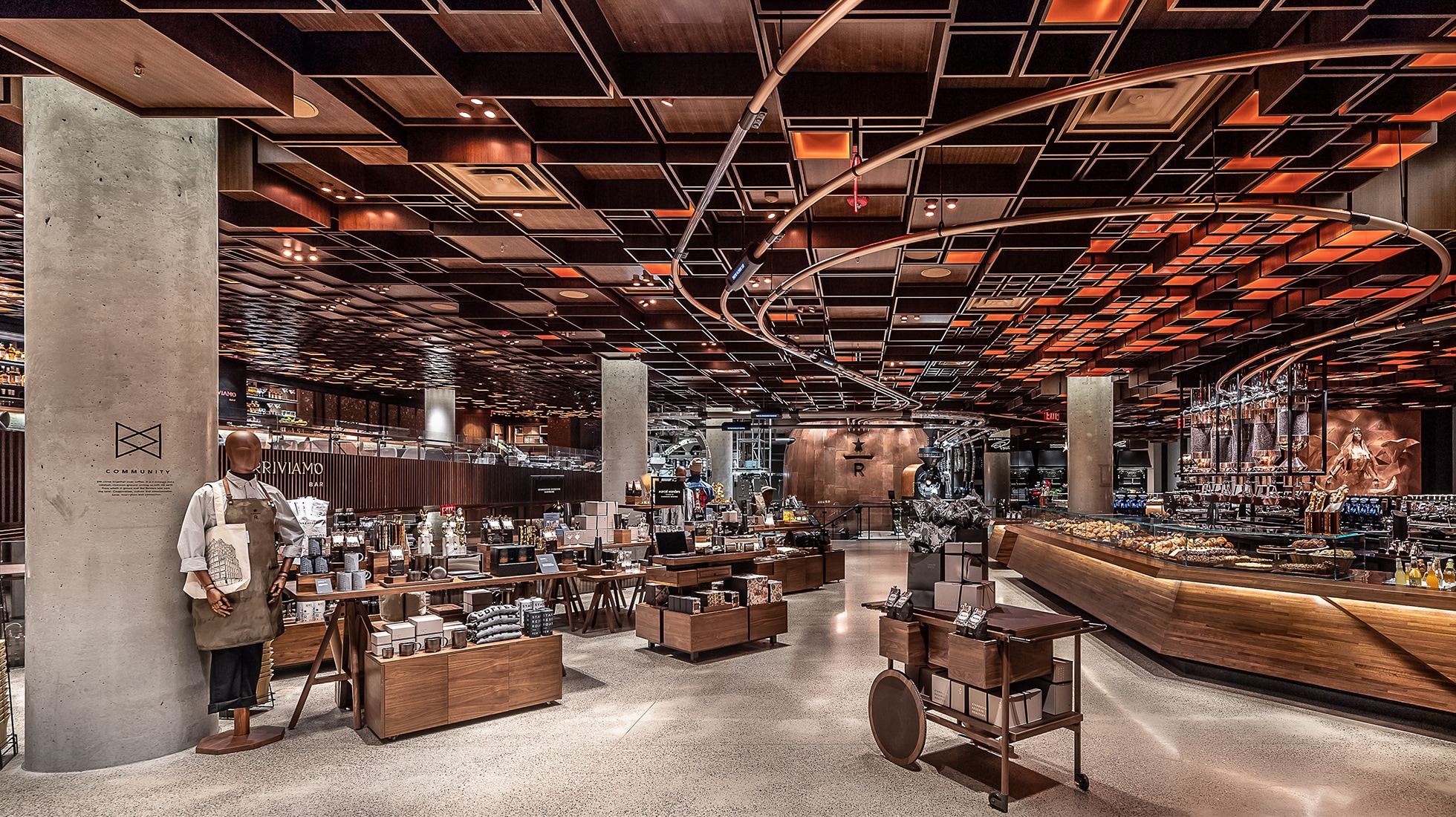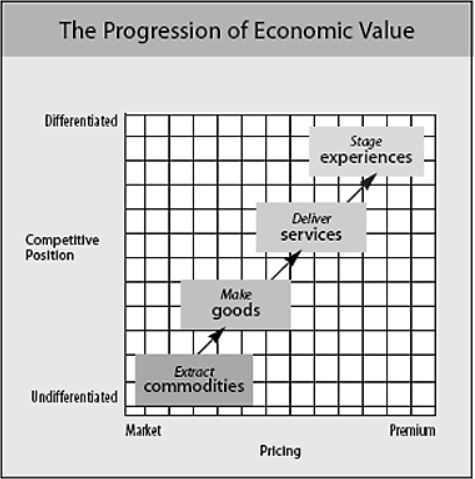If you don't know what the experience economy is, just ask your friends who got really into historically-accurate medieval knight fights. They know what's up. You don't get into historically-accurate medieval knight fights if you don't want wild experiences.
Hey, it may be excruciating to also hear the difference between a Morning Star and a Mace, but at least you got to learn a little bit about marketing.

Basically, the experience economy is, as Harvard Business Review suggests, when a "company intentionally uses services as the stage, and goods as props, to engage individual customers in a way that creates a memorable event.
So, in order to make an experience possible, you'll need a combination of goods or services. For example, with the medieval knight fight, there needs to be:
- The giant turkey leg food van
- The longbow instructor
- The gear; helmets, tunic jerseys, full suit of armour, court jester hats
- Transportation to and from the jousting arena
- Insurance for the entire event.
But, it's the combination of all these goods and services which results in an experience. The whole picture is worth more than the sum of its parts.
The rise of the experience economy.
The experience economy is a phenomenon which has been emerging since around the 1990s, where consumers have come to recognise there's more to life than collecting stuff.
According to an Eventbrite study, “more than 3 in 4 millennials (78%) would choose to spend money on a desirable experience or event over buying something desirable, and 55% of millennials say they’re spending more on events and live experiences than ever before.” In fact, Bellwether research recently found that event marketing is topping growth in the entire marketing field.
So, companies are catching onto the link between immersive and memorable events, and the influence their brand can have on attendees and onlookers.
According to B. Joseph Pine II, and James H. Gilmore, economists have traditionally lumped experiences in with services, but experiences must be thought of as a distinct economic offering.
"Today we can identify and describe this fourth economic offering because consumers unquestionably desire experiences, and more and more businesses are responding by explicitly designing and promoting them," says Pine and Gilmore.
"As services, like goods before them, increasingly become commoditized...From now on, leading-edge companies—whether they sell to consumers or businesses—will find that the next competitive battleground lies in staging experiences.
We live in a real-time, digitally enhanced world, where we can access our phones at all times, in order to enhance personal experiences. So, marketers have never had this amount of marketplace, and social noise, to work with and through.
Consumers know what they want, and will pay a premium for the highest level experience. Marketers have to respond to this, and adopt and leverage technology to create these desired immersive experiences, to provide an elevated product across all touch points.
What does this mean for B2B?
So, this ongoing shift isn't just evident with consumers, but occurs in the B2B realm as well. Both B2C and B2B face competition from the smartphone, and the constant level of engagement it provides. Failure to engage someone immediately, and they'll be gone.
Business meetings, conferences, events, and other staples of B2B are not exempt. These situations often encounter difficulty in maintaining attendance, let alone gaining full participation. Many guests can choose when they attended, and when they disappear, from any part of any event. So, low hours of engagement can be just as impactful as low overall numbers.
Personalisation, personalisation, personalisation.
The experience economy is what drives modern B2B buying activities. It caters to informed, digitally-aware, and self-motivating consumers, active on digital channels.
B2B buyer's expectations are heavily influenced by experiences they've had as B2C customers. This has led to 80% of B2B buyers looking for sellers to deliver a similar experience to B2C.
Integrate’s Director of Product Marketing writes:
Poor first impressions irreparably damage buyers’ experiences because they overwhelmingly “remember negative experiences above the positive ones.” Perhaps even more significant, every negative interaction requires three positive experiences to neutralise its impact."
Jennifer Goode
Director of Product Marketing, Integrate
Meeting buyers' expectations.
It's vital to know what buyers' want as they move from awareness, to consideration, to making a purchase. Forrester advises that sellers keep the following in mind:
- Buyers crave highly-tailored interactions and human connection.
- Buyers want to be heard. Active listening skills from sellers is a must-have as is personalised, relevant, and high-quality information.
- Buyers want vendors to be digitally adept. Again, this points to the need for a personalised approach, but it also emphasises a sophisticated multi-channel strategy that enables buyers to engage with vendors at any point they choose during the buying cycle.
- Buyers are part of buying committees, so team selling will become more pervasive. Collaboration across buying groups must be baked into the selling process.
Within the experience economy, there are two types of interactions a consumer can have with a brand:
- Customer participation. This means consumers participating actively or passively in an experience. A jouster in the medieval knight fights tournament is an active participant. The attendant hiding behind their hands as the horses crash? A Passive participant.
- Connection. Connectivity, be it physically or mentally, can change the experience too.
"If you're taking notes in a lecture, for example, you're more absorbed in the connection to the material than you would be if you were studying alone from a textbook," suggests Daniel Newman for Forbes.
"If you watch a sporting event standing on the immediate side-line, you're immersed in your connection to that experience (as opposed to watching it from the nosebleeds). One type of connection to experience is not more telling of consumer behaviour than the other (although it is important to marketers)."
What does this mean for marketers?
This can mean a lot of potential changes for marketers. But in particular: if you want to build brand affinity, you have to give people what they want. And this turns out to be experience.
So, you might be primarily selling a certain good or service, but what else do you have to offer? Can you fulfil a need they didn't ask for, or maybe they didn't even know they had? Do this, and you'll gain the loyalty of a social, and fluid generation of consumers.
Cadbury's Chocolate
Time for some examples. Cadbury's chocolate have been throwing out some imaginative marketing campaigns in recent years (which they don't need to do on my behalf, I'll buy a Twirl a day till I die.)

The chocolate company created a spa based on their new chocolate bar flavours, which was free to visit, but only for a day. Since it was both free, and for a limited time, the promotion had elements of experience and exclusivity.
Airbnb
Airbnb has shaken up the hospitality industry since its founding in 2008 - in ways good, and bad. They took the notion of travellers staying in homes around the globe, skipping the hotel, and turned it into an empire.
Since then, Airbnb has seen success after success - the company has reported doing 1.5 million annual bookings and boasts an approximate value of $31 billion.
The company has now started looking beyond this model, and is investing in building a global travel community based on experiences. Travellers can now book local-led experiences of sights and attractions surrounding their holiday booking.
Starbucks
Starbucks, in an attempt to challenge competitors and stay a front runner in the Venti Caramel Crunch Frappe game, opened a 15,000 square foot roastery in Seattle. The roastery is an interactive, immersive environment, where customers can taste handcrafted coffee brewed in front of them.

The company has also opened a roastery in Tokyo. According to KAM media:
"The customer journey is an immersive experience as well as an education in all things ‘coffee’. They take customers with them on the journey from bean to cup, delivering an experience like no other"
Amazon
People shop with Amazon for the experience. It's fast, efficient, and convenient. Terrible in most ways, but boy does that phone charger arrive quickly.
And now they're moving into the real world. Amazon have announced they will be bringing the convenience store’' format to the UK.
"The cashier-less ‘Go’ concept brings together the latest Amazon technology to deliver a unique customer experience, which challenges the perceived norms of traditional bricks-and-mortar retailers," states KAM media.
"It’s a really interesting move by Amazon when you consider it under the umbrella of the experience economy."
By creating a store, and business model, which focuses heavily on the customer experience, Amazon has created an unstoppable force.
KAM media continues:
"Utilising technology in a way that elevates the customer experience, rather than being purely gimmicky, is the masterstroke here. Frictionless technology that improves speed of service, availability and that frees up staff to deliver on customer service – means that they are striking right at the heart of the key factors that impact shopper satisfaction and loyalty."

